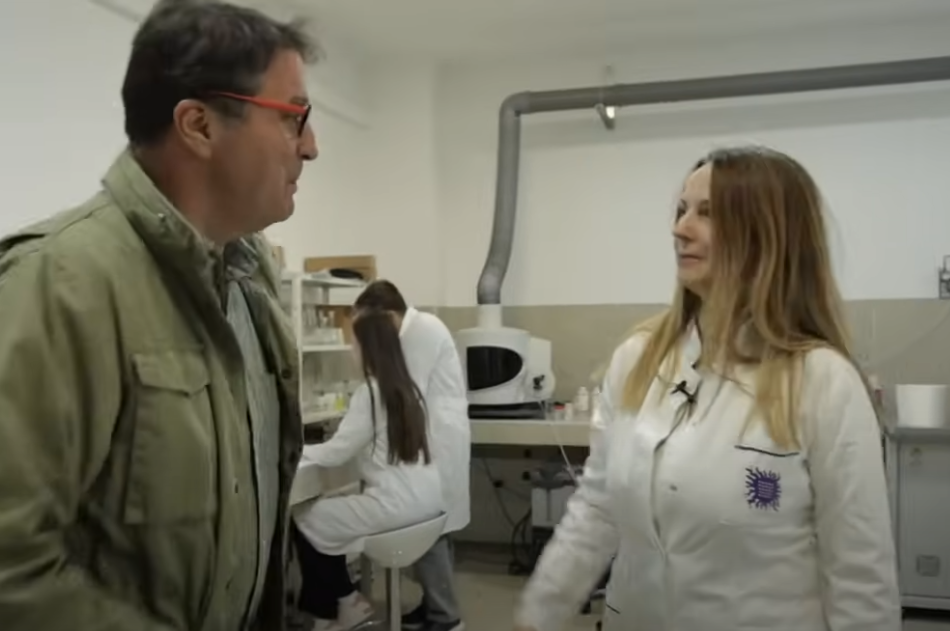
Photo: Print screen/RTS
In the contemporary era, the presence of micro- and nanoplastics represents a growing ecological and health challenge, often invisible to the naked eye. Although plastic gained widespread use during the 1940s and 1950s, replacing natural materials and becoming an indispensable part of daily life, its cumulative impact on the environment and living organisms is only now becoming visible. While landfills brimming with plastic are an obvious problem, a far greater threat lies hidden in the invisible fractions – micro- and nano-plastic particles.
The scientific community is intensively investigating the impact of these tiny particles on living organisms and human health. Research has shown that micro- and nanoplastics have been found in the vital organs and bloodstream of living beings. However, the full extent of their impact on life and health still requires detailed analysis. What has been unequivocally established so far is that the presence of plastic in living organisms across ecosystems leads to a significant reduction in their populations, and even to extinction. Specifically, biological studies, such as those on earthworms, have demonstrated the negative impact of microplastics, with the most evident consequence being a loss of reproductive capacity, or infertility. This is particularly concerning because, in combination with other contaminants, such as pesticides, a synergistic effect occurs, further exacerbating the negative impacts on biodiversity.
The problem of microplastics lies in their omnipresence and ability to affect all living organisms. Analyses that include identifying the type of plastic (e.g., PET packaging, plastic bags, nylon) from which the particles originate are crucial for understanding the full mechanism of their action. These analyses, essential for the detection and classification of microplastics, are actively The task of modern science is no longer solely to detect the presence of microplastics, but primarily to understand how they affect organisms at the molecular and cellular levels. In pursuit of answers to these key questions, the "Sasvim prirodno" team with Jovan Memedović, visited the Vinča Institute, specifically the Laboratory for Physical Chemistry, where, in discussion with Dr. Ivana Stajčić, they gained insight into specialized research dedicated to the problem of plastic: FTIR spectroscopy in microplastic analysis.
FTIR (Fourier-transform infrared spectroscopy) represents one of the most significant methods for identifying microplastics in biological samples, including the stomach contents of frogs. This technique enables precise recognition of the chemical composition of microplastic particles based on characteristic absorption peaks in the infrared spectrum. Each polymer (polyethylene, polypropylene, PET, etc.) has a unique FTIR fingerprint, allowing for its identification in complex biological samples. The technique itself does not require complex sample preparation and allows for the preservation of particles for further testing.
It is particularly useful in studies requiring the quantification and classification of microplastics within the digestive tract of aquatic organisms. By analyzing microplastics found in the stomachs of frogs, the level of pollution in their natural habitat can be assessed. The presence of certain types of plastic can indicate specific sources of pollution, such as packaging waste, textile fibers, or industrial polymers. Furthermore, combining FTIR spectra with optical analysis achieves greater accuracy in determining whether the observed particles are indeed synthetic or originate from natural materials (e.g., cellulose, lignin).
It can be concluded that FTIR spectroscopy, performed by Dr. Ivana Stajčić at the Vinča Institute, is an indispensable method in ecological microplastic research. It enables precise, rapid, and reliable identification of different types of plastic present in the digestive tract of aquatic organisms (such as frogs), thereby contributing to a better understanding of the impact of anthropogenic pollution on biodiversity and ecosystem health.
The Vinča Institute, with its highly specialized research teams and advanced methods, actively contributes to elucidating this global ecological and health challenge.
You can watch the complete episode about micro and nanoplastics here:
https://www.youtube.com/watch?v=ml9FR38WHkc



